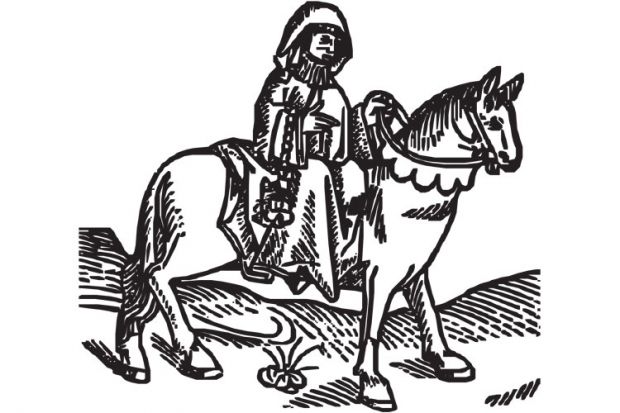A University of Kent academic has brought together writers from the university and beyond for a series of stories about the plight of refugees to be read over the course of a nine-day walk modelled on The Canterbury Tales.
David Herd, head of Kent’s School of English, works with local refugee organisations and is also an established poet whose latest collection, All Just, focuses on issues affecting migrants and asylum seekers.
As a result, he was approached by the Gatwick Detainees Welfare Group with plans for “a walk in solidarity with refugees and detainees” from Dover via Canterbury to Crawley, near Gatwick Airport, to coincide with Refugee Week, 15‑21 June. The resulting Refugee Tales walk will follow the North Downs Way, a traditional pilgrimage route, although not the one used in Chaucer’s poem.
Professor Herd said that the group always wanted to use The Canterbury Tales as an inspiration, with the aim of creating “a modern pilgrimage, where minds would be changed and views would be altered through the telling of stories”. The walk will also form “a physical representation” of the journeys undertaken by refugees and detainees.
Novelists paired with migrants
After each day’s section, events will be held in churches, barns and village halls, where two out of 16 modern tales (including a prologue) will be read aloud. Although each has been written by a professional writer, some are closely based on anonymised stories of individuals at different stages in the migrant experience including the Arriver’s, Appellant’s, Detainee’s and Deportee’s Tales. Others draw on the lives of the people who interact with refugees and asylum seekers, such as the Interpreter and the Lorry Driver.
To make all this happen, Professor Herd, as arts coordinator of the project, assembled writers, including Kent colleagues Abdulrazak Gurnah and Dragan Todorovic, and novelists such as Marina Lewycka and Iain Sinclair. Each has been paired, he said, with “the person behind the tale and has spoken with them at length. Some have been extremely faithful to what they heard, others have exercised their imagination a bit more, but all have been driven by the truth of the situation.”
The walk, which has secured support from the Arts Council, is, as Professor Herd explained, about “looking at how arts can help in these circumstances” and “raising awareness, not money”. The central policy messages, he continued, are that “indefinite detention is inefficient, expensive and a terrible waste of human life” – and that 28 days should be established as the maximum permissible period. At the same time, those involved in the project are keen to “assert and celebrate the positive contributions of migrants to British society” and to “communicate and share the stories which go unspoken and unsaid, even in tribunals, about what migrants have fled from and what it is like being here. It is an opportunity for them to be heard fully.”
It is estimated that about 40 people, including former detainees and asylum seekers, will complete the whole walk, with about 60 taking part on any one day and even more attending the evening events, culminating in the one at the 500-seat Hawth Theatre in Crawley. As a further link to Chaucer and the pilgrimage theme, those reaching Canterbury on 14 June will receive a (non-religious) blessing in the cathedral.
后记
Article originally published as: The Migrant’s Tale: untold histories unfold in pilgrimage fit for our times (11 June 2015)




